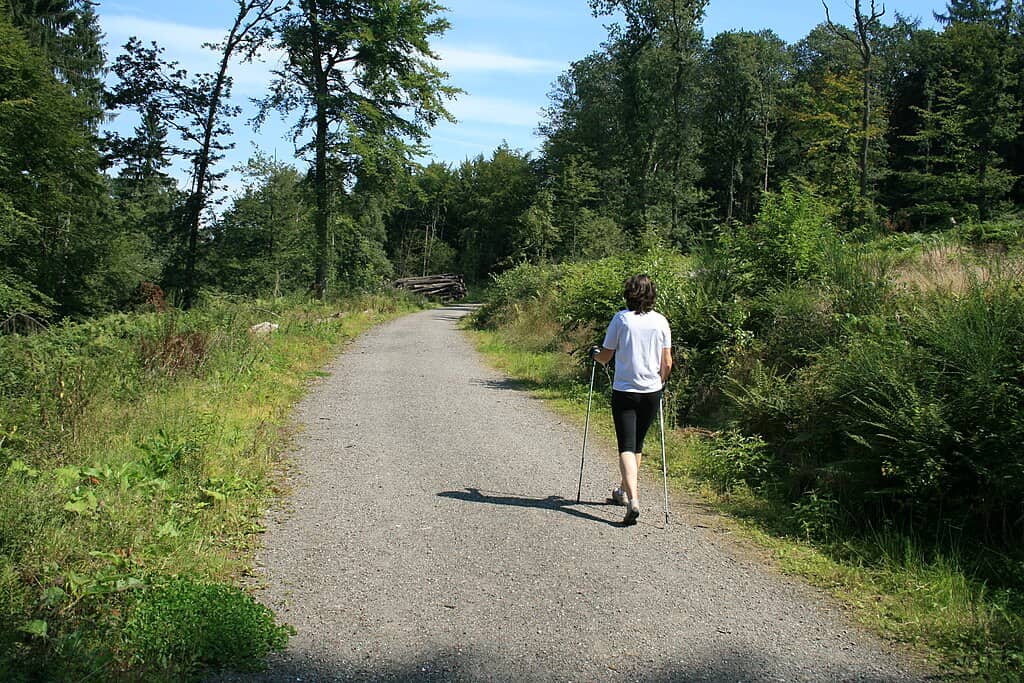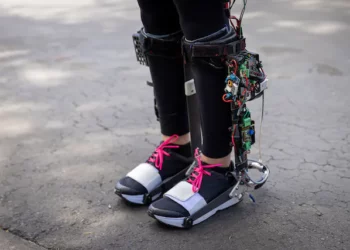Everyone knows (hopefully) that walking is healthy and it’s good to walk every day. Common wisdom says you should walk 10,000 steps a day, but it’s not like walking less isn’t helpful. In fact, the number of steps from which you see health benefits might be lower than previously thought. In a new study, researchers found that walking at least 4,000 steps a day reduces the risk of dying from any cause. Even just 2,300 steps a day reduces the risk of dying from diseases from the heart and blood vessels.

A sedentary person may only average 1,000 to 3,000 steps a day. So especially for them, it’s important to walk as much as possible.
The new study went through 17 previous studies that followed more than 200,000 people, analyzing their results. The analysis showed that the more you walk, the greater the health benefits you get. Walking an extra 500 steps was associated with a 7% reduction in dying from cardiovascular disease, while 1,000 steps were linked with a 15% reduction.
“We found that this applied to both men and women, irrespective of age, and irrespective of where you live,” Maciej Banach, study author from the University of Lodz, said in a press release. “As little as 4,000 steps a day are needed to significantly reduce deaths from any cause, and even fewer to reduce deaths from cardiovascular disease.”
Walking is good for you
Many studies have highlighted how a sedentary life can contribute to an increase in risk of cardiovascular disease and a shorter life. Insufficient physical activity affects over a quarter of the world’s population and is the fourth most frequent cause of death. The pandemic has led to even lower levels of physical activity that haven’t yet recovered.
Until now, it hasn’t been clear what the optimal number of steps is or the effects of this activity, with some health guidelines suggesting people to walk 10,000 steps per day. This meta-analysis is the first one to look at the effect of walking up to 20,000 steps a day but also to assess if there are any differences depending on age, sex and where people live.
The studies analyzed by the researchers followed participants for an average of seven years. The mean age was 64, and 49% of participants were female. In older adults, there was a 42% reduction in death risk when walking 6,000 to 10,000 steps a day, while there was a 49% reduction in risk in younger adults walking between 7,000 and 13,000 steps a day.
“In a world where we have more and more advanced drugs to target specific conditions such as cardiovascular disease, I believe we should always emphasise that lifestyle changes, including diet and exercise, which was a main hero of our analysis, might be at least as, or even more effective in reducing cardiovascular risk and prolonging lives,” Banach said.
However, the study has some limitations. It was observational, so it can’t prove that increased step counts cause the lower risk of death — only that it’s associated with it. The impact of step count wasn’t tested for people with different diseases, as participants were generally healthy. Also, the researchers didn’t account for differences in race and socioeconomic status.
The study was published in the European Journal of Preventive Cardiology.






